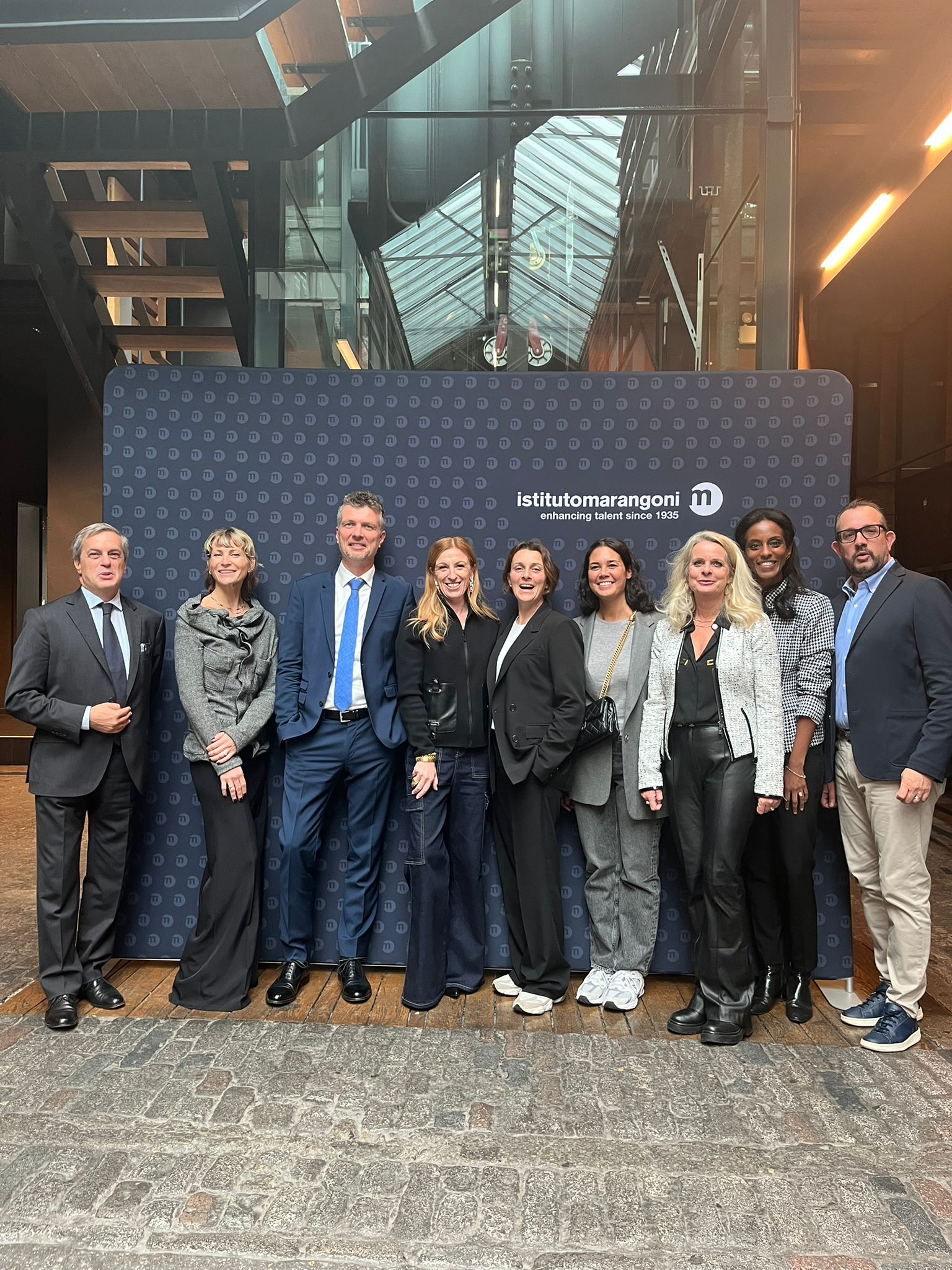Italian high jewellery: 5 Reasons it leads in luxury, heritage, and global markets


How Italian high jewellery merges heritage, craftsmanship, innovation, and global luxury, defining the enduring excellence of Made in Italy design
Is it the exclusivity of rare gemstones, the discreet prestige of a storied maison, or something more profound—an ever-evolving dialogue between heritage, innovation and meaning? High jewellery now transcends ornamentation, emerging as a medium of personal expression.
In an era when luxury clients seek substance over symbols, the international appeal of “Made in Italy” high jewellery lies in the stories that each piece tells, the values it embodies, and the emotional resonance it inspires.
These themes took centre stage during a recent conversation at Istituto Marangoni London’s Welcome Week, where students, Confindustria Federorafi (Federazione Nazionale Orafi Argentieri Gioiellieri Fabbricanti) and the Italian Trade Agency (ITA) came together to explore not only what high jewellery is, but what it represents in a marketplace increasingly shaped by sustainability and the legacy of family-owned maisons.
In this context, Italian high jewellery is not merely as an artefact of exquisite craftsmanship, but a living expression of a luxury industry that is evolving for a new generation—one that values authenticity, personal connection and enduring meaning.
Bringing together leading voices from across the Italian high jewellery landscape, the discussion featured Claudia Piaserico, President of Confindustria Federorafi; Alessandro Bruni, Commercial Director of Unoaerre; Alessia Crivelli, General Director of Crivelli; and Federico Zonta, CEO and owner of D’Orica. Each participant offered unique insights, reflecting the blend of entrepreneurial vision, family heritage, and creative excellence that continues to shape the identity of Italy’s jewellery sector today.

Highlights from Istituto Marangoni London's Welcome Week 2025, attended by representatives from Confindustria Federorafi and the Italian Trade Agency
From this dialogue, five key factors emerged that set Italian high jewellery apart on the global stage.
1. Authentic Craftsmanship Driving Italian High Jewellery Excellence
The “Made in Italy” label is recognised worldwide as an emblem of quality, creativity and prestige. But as Sennait Ghebreab, Programme Leader of Fashion Business at Istituto Marangoni London, emphasises, “safeguarding this reputation is not automatic; it requires continuous dedication, a delicate balance between tradition and innovation, and a clear strategic vision on key issues such as sustainability and digital transformation.” This was the powerful message shared during the panel discussion featuring Italian high jewellery CEOs.
The strength of Italy’s jewellery industry lies in its historic production districts—Arezzo, Vicenza, Valenza and Torre del Greco—each with a comprehensive supply chain that supports a unique manufacturing ecosystem. These regional hubs blend artisanal mastery with industrial efficiency, forming an unmatched foundation for high-end production.
Consumer demand today is accelerating the industry’s growth, fuelled by a desire for authenticity, ethical sourcing, and designs deeply rooted in Italian tradition.
The panel discussion focused on how Italian jewellery continues to innovate without losing sight of its heritage. Highlights ranged from machine-crafted gold chains to avant-garde designs created using additive manufacturing, offering a window into Italy’s diverse jewellery landscape.
2. Heritage as a Strategic Asset in Italian Luxury Brands
Heritage in Italian jewellery is a strategic advantage. During the talk, students gravitated towards the stories of family-owned icons such as Pomellato, Damiani, Crivelli and Unoaerre, as well as the influential networks found in historic jewellery hubs like Vicenza and Valenza.
Members of Confindustria Federorafi made it clear: these storied businesses do more than uphold quality; they are also pioneers, rewriting the rules of sustainability and brand storytelling—two essential elements in modern luxury brand management.
View this post on Instagram
Founded in 1989 D'Orica have always approached the world of goldsmith’s art with the desire to create a sustainable business, ensuring its Made In Italy label
As the panel put it, “Italy’s high jewellery makers are much more than artisans; they are the curators of a centuries-old family business model that shapes today’s luxury market trends,” said Federico Zonta, CEO and owner of D’Orica. This blend of multi-generational expertise, vision and sustainable practices ensures that the Made in Italy label continues to shine brightly on the global stage.
The conversation struck a chord with students, especially those poised to lead the next generation of family businesses. When asked what it is really like to work in a family enterprise, Alessia Crivelli, General Director of Crivelli, offered an honest perspective: “It is hard, especially when working with your father as a business partner,” she admitted with a laugh, “but it is worth it—do not give up.”
View this post on Instagram
Crivelli combines refined craftsmanship, original design, and carefully selected precious materials to create unique pieces
3. Digital Innovation Elevating Italian Jewellery Marketing
The digital world has become the new runway for Italian jewellery. Agile SEO strategies and captivating narratives are now essential for Italian luxury brands, transforming keywords such as “Italian high jewellery trends,” “family heritage in luxury brands,” and “Made in Italy authenticity” into magnets for international luxury seekers. With every Instagram post and search-optimised article, Italian designers reach new audiences eager for both exclusive experiences and peerless quality.
What is truly game-changing? Italian jewellery brands now use digital platforms to showcase their expert craftsmanship while adopting modern tools. As Claudia Piaserico, President of Confindustria Federorafi, observes: “Italian jewellery embodies a seamless harmony of tradition and innovation, where masterful craftsmanship intersects with cutting-edge design, alongside both physical and digital communication.” This embrace of the digital realm ensures that Italian jewellery remains highly coveted in an increasingly competitive global landscape.
4. Expanding Made in Italy Jewellery Exports Worldwide
As consumer values shift towards transparency, digital engagement and sustainability, the future of Made in Italy jewellery relies on strong family ties, innovation rooted in heritage, and storytelling that resonates on a global scale.
Remarkably, “over 70% of Italian jewellery production is exported, with the UK standing out as the most significant market, boasting a consumption value of around €5.2 billion (approximately £4.5 billion),” as reported by Sennait Ghebreab.
Hosting this conversation with Federorafi and the Italian Trade Agency (ITA) at Istituto Marangoni London provided an exceptional platform to celebrate Italian creativity and craftsmanship in the UK market. As Ghebreab concludes, “this event exemplifies how cultural and economic diplomacy showcases the soft power that champions our creative talents on the global stage.”

Representatives of Confindustria Federorafi at Istituto Marangoni London
5. Training the Next Generation of Italian Luxury and Jewellery Leaders
Beyond industry insights, the discussion provided valuable first-hand accounts for students eager to launch their own careers in the global luxury market. Meetings between renowned entrepreneurs and students highlighted the living link between cultural heritage and innovation, reinforcing that Italy’s luxury sector isn’t just about exporting jewellery but is centred on a legacy-driven approach to brand value.
As Fabio Rubino, School Director at Istituto Marangoni London, reminds us, “The visit from Confindustria Federorafi represents an important opportunity for dialogue between the academic world and industry. Istituto Marangoni London’s mission is to train international talents who look to the future of design and fashion with the same spirit of innovation and mastery that has always characterised Italian creativity.”
Silvia De Vecchi
Librarian, London


